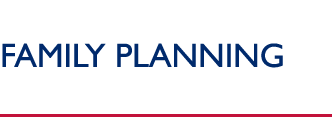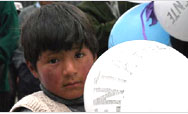International Youth Day - August 12, 2008
| |
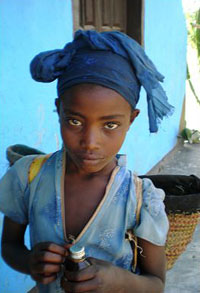
|
| |
Source: Lauren Strange/USAID |
Youth stands for vitality. It comes with energy and vigor and transcends all nationalities and borders while uniting young members of the world’s society in a single bond. International Youth Day is the perfect tribute to the contributions youth make to improve health in the developing world.
USAID's Bureau for Global Health and the Agency’s country-based Missions not only support many programs to improve the health of young people in the developing world, but the Agency also involves youth as key actors in its programs.
Benin
“Spacing Our Children” is a theater activity designed to inspire discussion and raise villagers’ awareness of modern family planning (FP) methods. The play is part of the Promotion Intégrée de la Santé Familiale au Borgou-Alibori Project, managed by University Research Corporation and funded by USAID. Each play is followed by short discussion groups, segmented by age and sex, to encourage villagers to freely exchange stories with their peers, ask questions, and clarify what they learned. The project also broadcasts radio shows to reinforce the messages of the play.
Bolivia
Youth and youth organizations in Bolivia help to implement gender-based violence policies and programs. Youth are engaged in all phases of the activity, including situational diagnosis, analysis, implementation of activities, and systematization of the model and lessons learned.
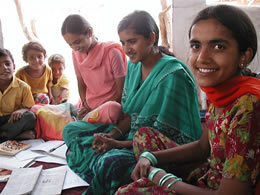 |
|
Three adolescent students in a village near Jodhpur, India, sit
during an English lesson provided by the Veerni Project, a local
nonprofit, since secondary schools in this rural area are too
remote for girls to access safely. Younger children listen in.
Source: Rose Reis/Courtesy of Photoshare |
|
India
A youth-friendly pharmacy network model in India addresses the FP needs of married adolescents, a segment of the youth population largely ignored. The public-private partnership that implemented the program will ensure that it remains sustainable, even after USAID has finished contributing funds.
Kenya
The Kenya Adolescent Reproductive Health Project focused on in- and out-of-school youth aged 10 to 19 years in an effort to delay the onset of sexual activity, decrease and/or prevent high-risk sexual behaviors, and increase young people’s knowledge of reproductive health (RH) and uptake of services. The strategy included peer education, guidance, and counseling in schools, and introduced youth-friendly services in participating health facilities. Sensitization and guidance efforts conducted by trained peer educators in community-, clinic-, and school-based interventions were the hallmark of this program.
Madagascar/Peru
An RH program for young adolescents (ages 10 to 14) in Madagascar and Peru helps increase knowledge about the body, fertility, and gender roles, and build negotiation and communication skills among adolescents. This group was targeted because knowledge and skills acquired during this developmental stage can promote behaviors that result in healthy outcomes as these young people enter adolescence and adulthood.
Thailand
The “Teens on Smart Sex” program is a study examining the outcomes of a school-based HIV/AIDS curriculum for Thai college students, which found that:
- The program did not increase initiation of sexual activity.
- The program improved students’ high levels of knowledge about HIV.
- The program improved students’ attitudes about condom use, particularly among females.
- Immediately after the program, condom use among females in the intervention group increased.
- The program improved students’ acceptance of people living with HIV and AIDS.
- Teacher training contributed to improvements in teachers’ knowledge and attitudes.
Evaluation findings were used to strengthen course activities. The revised course has been scaled up to colleges throughout Thailand.
| |
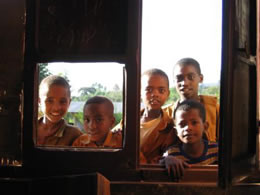
|
| |
Young boys look through a school window in Jimma, Ethiopia to observe their peers participating in a "Youth Action Kit" HIV/AIDS prevention activity.
Source: Ana Claudia Franca-Koh/Courtesy of Photoshare |
Uganda
The Uganda-based Straight Talk Foundation’s Straight Talk Campaign is perhaps one of the most successful ongoing media efforts to bring information about sexual and reproductive health to youth in Africa. It is widely admired because its activities are popular with youth, widespread in reach, innovative in adding new elements, and endure over time.
HIV/AIDS
Immunization and Vaccines
Issue Briefs
- Youth InfoNet
Family Health International’s monthly e-newsletter is a one-stop electronic source for new publications and information on youth RH and HIV prevention.
- Interagency Youth Working Group
The Interagency Youth Working Group seeks to provide global technical leadership to advance the RH and HIV/AIDS outcomes of young people ages 10 to 24 in developing countries.
The General Assembly of the United Nations declared August 12 International Youth Day in December 1999 as an endorsement of the recommendation made by the World Conference of Ministers Responsible for Youth (Lisbon, August 8–12, 1998).
The Assembly recommended that public information activities be organized to support the Day as a way to promote better awareness of the World Programme of Action for Youth from the year 2000 and beyond.
|

